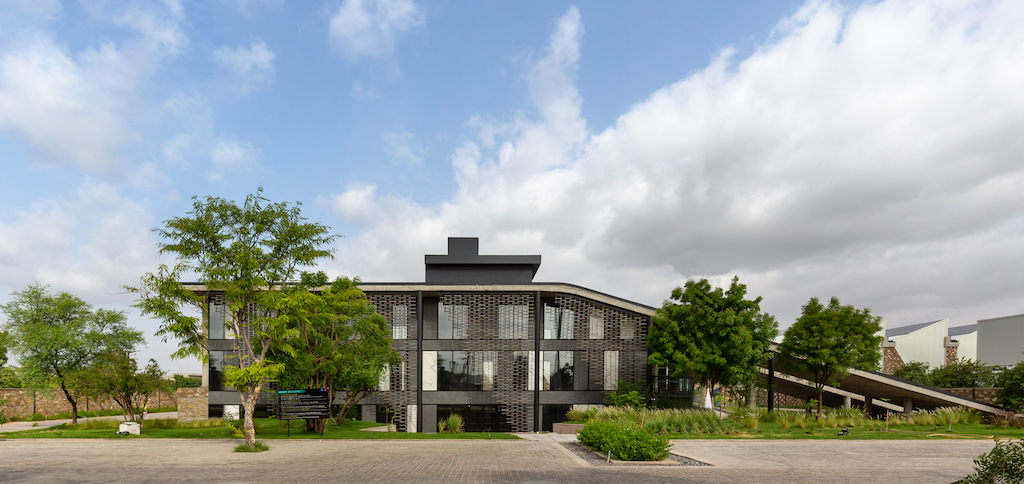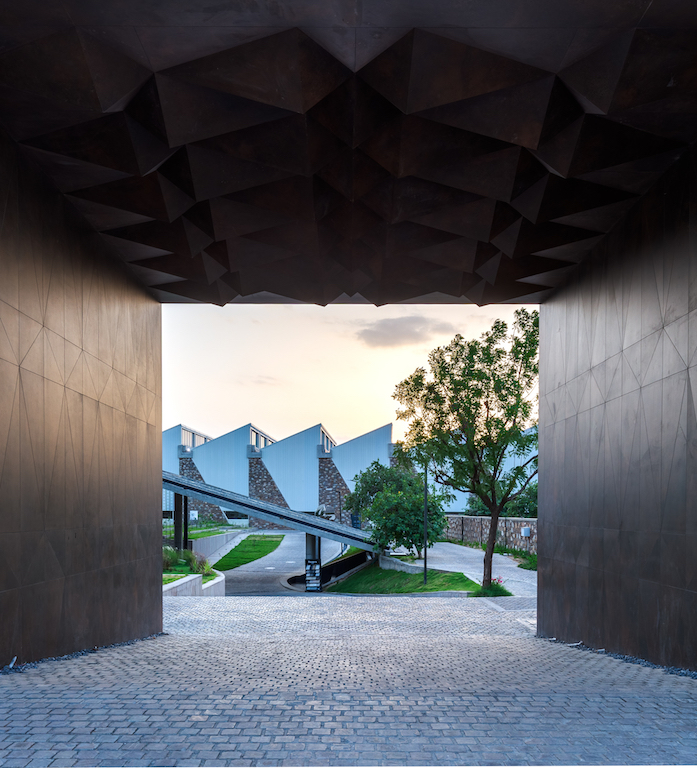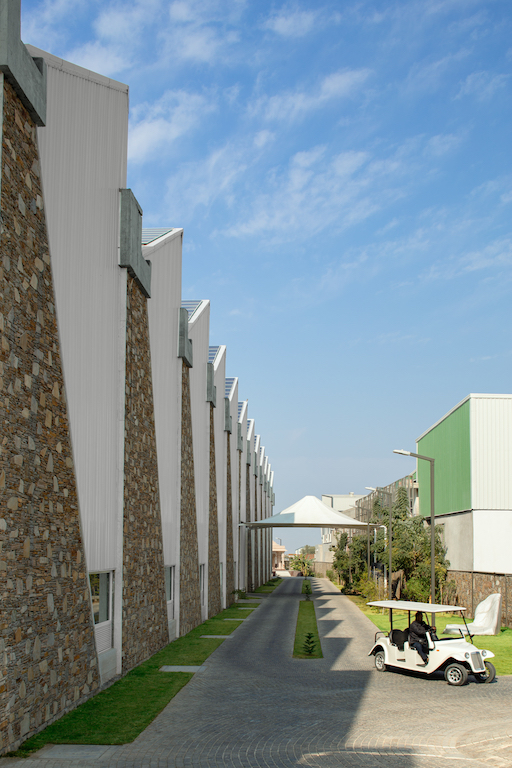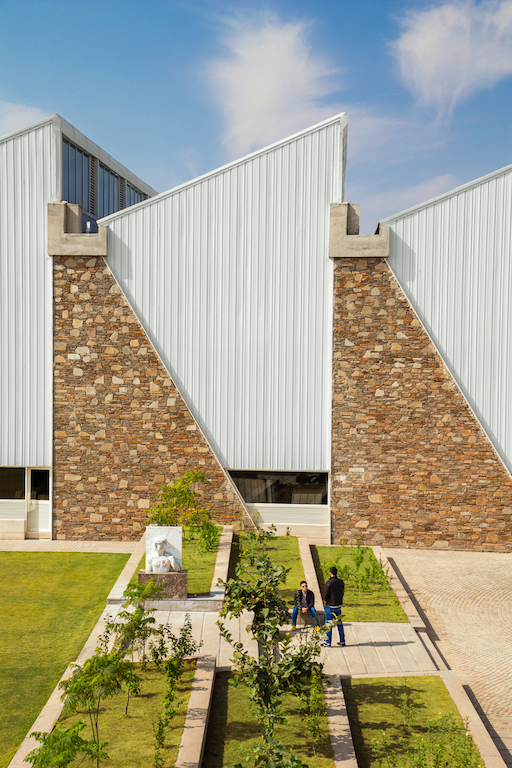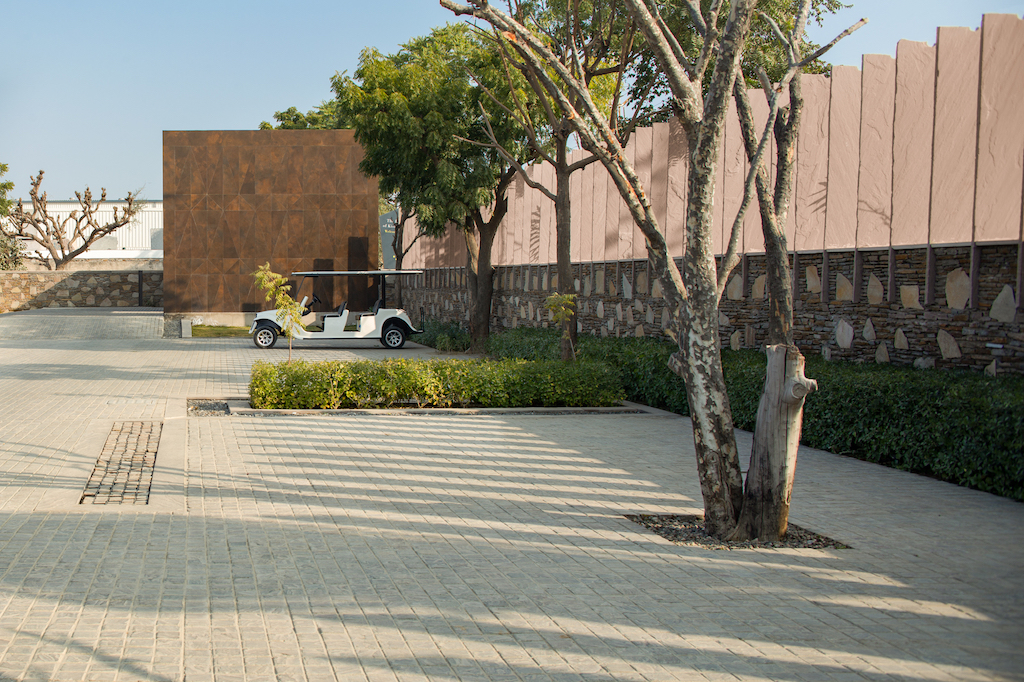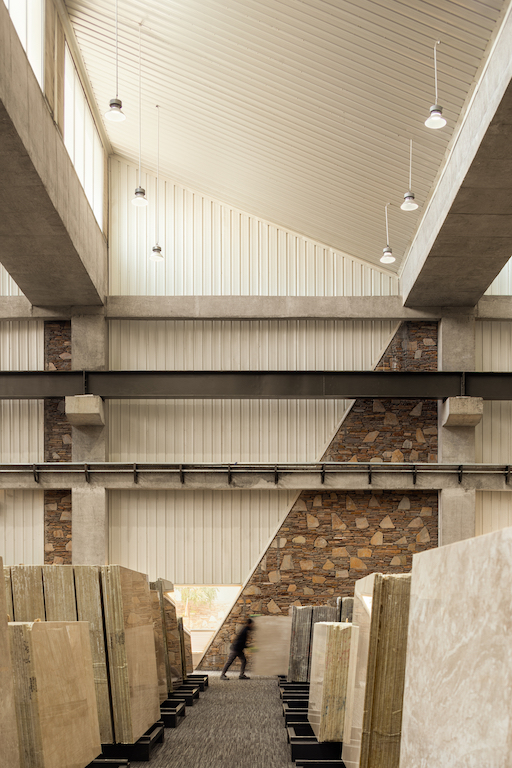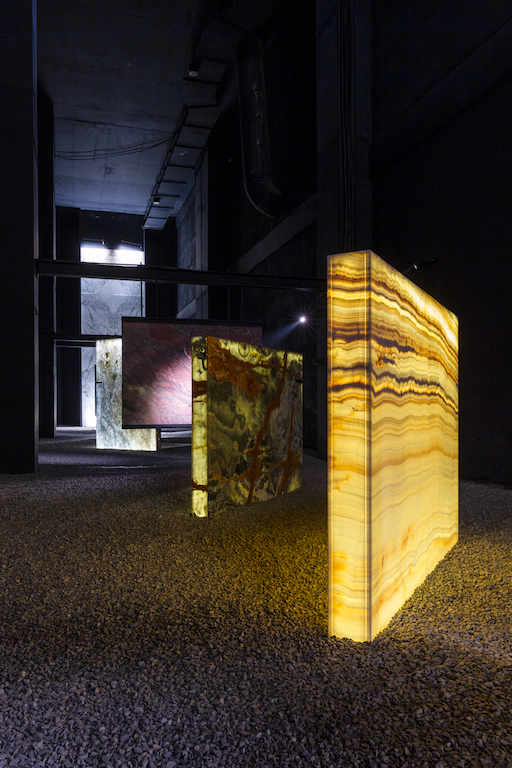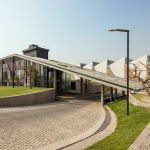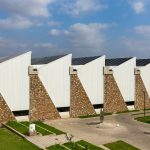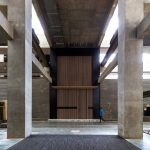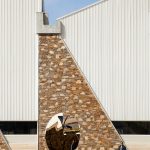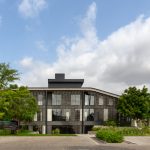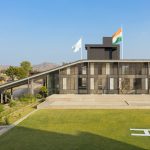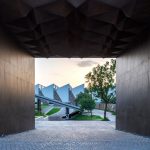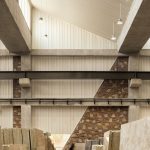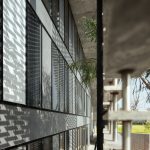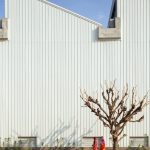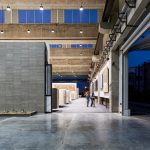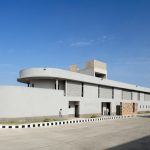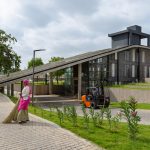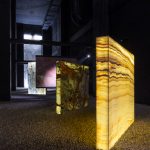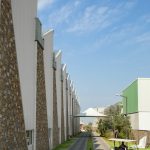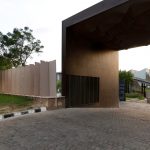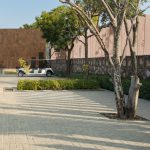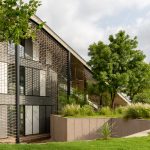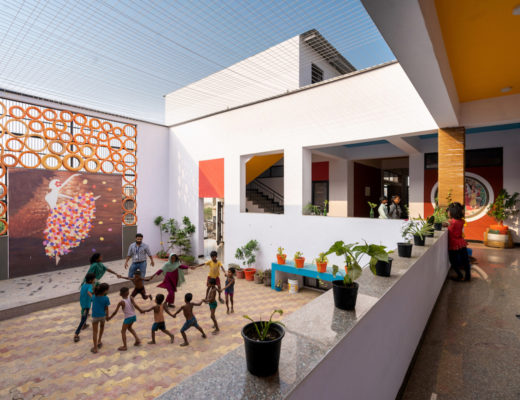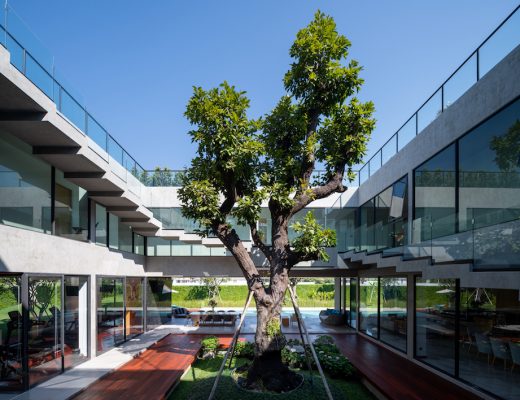Urbanscape Architects was commissioned to design the administrative and industrial complex in Kishangarh located in India’s northwestern state of Rajasthan for Stonex India – a stone and marble company.
Designed to be a landmark in town, the 20,000m² project led by architects Dinesh Panwar and Ajay Bhardwaj is a product of simultaneous interactions between the dynamic ordering of principles across varying systems and scales, and responses towards the site, which has resulted in a distinct facility amid the existing industrial landscape.
Adhering to exigencies of the site and logistically-sound planning, the manufacturing block orients rather unconventionally in the east-west direction. The orientation is strategically exploited by incorporating complementary systems: north light trusses have been introduced, sloping at an angle of 23 degrees towards the south providing for ample surface for photovoltaic panels. Prefabricated white metal flutters give the entire structure a buoyant profile when looked at from afar. The stone buttresses make the building appear grounded at a more proximal viewing.
The sides facing east and west are mostly blank, barring the small windows that connect the occupants with the surroundings. The windows also create a wind draft across the height of the shed expelled through the ventilators along the north light trusses, therefore avoiding hot pockets at the top and effectively cooling the building by about 10 to 12 degrees Celsius. The building is designed such that the spaces are used judiciously, allowing for maximum possible green cover and softscaping. The landscaping of the project was conceptualised by Akshay Kaul and Associates.
You might also like:
Charged Voids designs India office with enclosed ellipse interjected with skylights and courtyards
Vietnamese firm Kientruc O designs its office with completely natural cooling and ventilation
Other sustainable measures include the use of bio sewage treatment plants that recycle wastewater and use it for flushing toilets; rainwater harvesting techniques keep the groundwater table recharged; solar panels installed on the roof generate about 1 megawatt of energy (sufficient to fulfill the power requirements of the factory).
The design of the office building revolves around the concept of mutually respecting the surroundings and nature. The built form is raised and sunk into the ground away from trees already existing on-site. Consequently, the built mass and the ground are punctured to create sunken courtyards and an amphitheater within the earth-cooled lower floor.
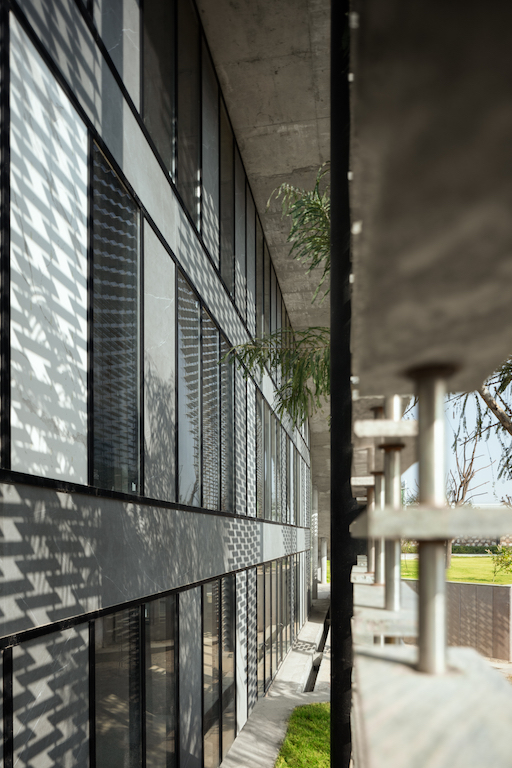
Being partly underground, the mass defines a seamless silhouette adorned by screens in stone and greenery climbing up the entire roof in a sweep. The hot and dry climate of Rajasthan is combated by the partly sunk mass, staying cool during summers and warm during winters. This is achieved through passive design strategies of earth berming and earth coupling. The temperatures indoors are regulated with the help of radiant cooling, allowing for a 60% efficiency in the running cost of the building.
This has also led to the HVAC load cutting by almost 40%. The floor slabs are additionally radiant cooled to regulate temperatures. The skin of the office building sandwiches a puff panel between two laminam porcelain tile panels to further insulate the interiors. The façade is complemented by an enveloping stone screen that is fabricated using the waste stone from a nearby quarry and the stone wastage that is generated on-site. This screen provides solar shading from the south-east and west glare. A playful, visual appeal is created by the light and shadow of interwoven stone blocks that appear to be floating at different levels.
See the full image gallery here:
Photos: Andre Fanthome, Suryan // Dang


